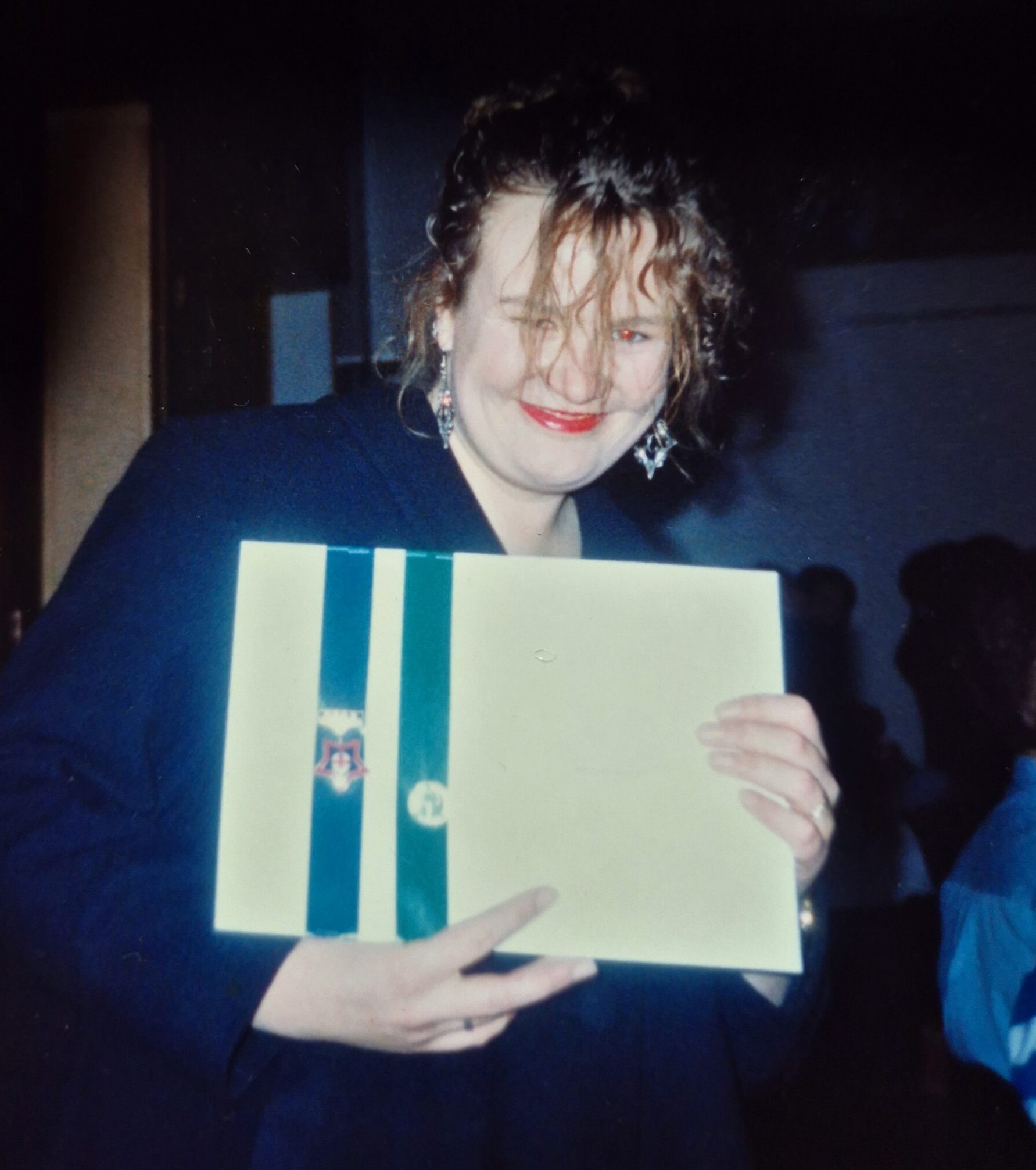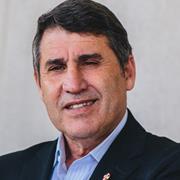For those of us who graduated in the early 1990s, the current job market for new graduate nurses brings back a sense of déjà vu. I was one of those graduates, freshly minted as a registered nurse (RN), in 1992.
After completing my studies, I found myself unemployed, with hospitals across the country not hiring. It was a disheartening reality — unemployment was definitely not what I had envisaged when I started my training three years previously.
In desperation, I borrowed money from my then-boyfriend and embarked on a trip to the United States (US) to take the NCLEX (national council licensure exam) state exams. Back then, the exams required a physical presence in the US.

The exams took place on a pier in New York City, where I was accompanied by two classmates and a large cohort of new graduate nurses from across New Zealand. We were a group of hopefuls, rejected by our own country, seeking opportunities abroad.
The trip to the US was a mix of adventure and reality check. We visited hospitals in New York, Louisiana, and Florida, where the demand for nurses was high. However, upon my return to New Zealand, I faced two harsh truths: I realised I didn’t actually want to work in the US — but staying in New Zealand meant signing up for the unemployment benefit.
The challenges they face are a reflection of years of inconsistent and inadequate nursing workforce planning in New Zealand.
After a few months of searching, I finally found a job as an RN in a geriatric hospital, working two night shifts a week. It was not the career path I had intended, but it provided the experience I needed at the time.

Eventually, I secured a full-time position at a local general hospital, though the job wasn’t secure, with monthly temporary contracts that lasted over a year.
New generation, similar challenges

This article isn’t about an old nurse reminiscing about past hardships or telling new graduates to “suck it up”. Far from it. I empathise deeply with today’s new graduates, who are experiencing similar frustrations. But they probably don’t realise that the challenges they face are a reflection of years of inconsistent and inadequate nursing workforce planning in New Zealand.
In the 1990s, neoliberal policies aimed at economic efficiency led to fiscal restraints across all sectors, including health. Major reforms in the health sector resulted in workforce restructuring, significantly reducing full-time equivalent (FTE) positions nationwide.
Hospitals cut their nursing workforce to save money, leading to a substantial decrease in nursing vacancies. With few job prospects, many new graduates were forced to seek employment overseas.
If the Government is insisting that it isn’t because of budget cuts, then what is actually the problem?
Fast forward to 2024, and our current new graduates face a different but equally troubling situation. Although the Government insists that austerity measures won’t affect the frontline, the reality suggests otherwise, with some new graduates exiting programmes without the certainty of employment.
If the Government is insisting that it isn’t because of budget cuts, then what is actually the problem?
Is it really about budget cuts?

In a recent interview on Radio New Zealand,1 the new chairman of Te Whatu Ora — Health New Zealand, Lester Levy, revealed a startling fact: The country currently has “thousands” more nurses than what is budgeted for. When questioned about the ongoing pressure felt by frontline staff, Levy pointed out that the issue lies in the mismatch between nurse recruitment and placement, particularly in hard-to-staff locations.
This raises a crucial question: is the nursing workforce budget inadequate, or is the real problem rooted in high recruitment levels coupled with poor planning and a lack of national oversight?
Loss of these nurses to overseas jobs not only depletes our health system but also deprives Māori communities of culturally concordant care provided by Māori nurses.
Let’s examine the stats. Before the COVID-19 pandemic, internationally qualified nurses (IQNs) comprised 27 per cent of New Zealand’s nursing workforce.2 In just four years, this figure has surged to 44 per cent.3
Between March 2023 and March 2024, the Nursing Council of New Zealand registered approximately 15,000 IQNs,3 (though not all are currently employed in the country). Statistics from that period indicate that around half of these IQNs may be working in New Zealand.
This sharp increase in IQNs highlights the Government’s ongoing reliance on this workforce, which requires minimal investment beyond adjustments to immigration policies. It provides a quicker and more cost-effective response to workforce fluctuations compared to investing in the domestic nursing workforce.

In response to mounting workforce shortages, the Nursing Council has made it increasingly easy for IQNs to register in New Zealand. This has included lowering language requirements and replacing the New Zealand-based competency assessment programme (CAP) with an online course that can be completed offshore.
Additionally, recent gains secured by the New Zealand Nurses Organisation (NZNO) through the collective agreement for nurses employed by Te Whatu Ora — Health New Zealand have made the country an even more attractive destination for IQNs.
While these measures may help to address immediate staffing needs, they raise significant concerns about the long-term sustainability and cultural concordance of New Zealand’s nursing workforce.
Impact on domestic new graduates
The situation for new nursing graduates is arriving at a critical point, with many potentially facing the very real threat of unemployment. The lack of national oversight and coordinated planning has contributed to this crisis, resulting in a system where no single entity is accountable for ensuring that domestically-trained graduates have adequate job opportunities.
After dedicating three years of their lives and accumulating significant student debt, New Zealand-trained nurses deserve the assurance of job security.
Employers, especially Te Whatu Ora, must commit to securing positions for these new graduates. The systemic failure to provide sufficient positions for domestic graduates risks driving them overseas in search of work, with Australia standing to benefit significantly from this exodus.
Who is responsible and accountable?
After dedicating three years of their lives and accumulating significant student debt, New Zealand-trained nurses deserve the assurance of job security. However, due to inadequate workforce planning, many new graduates may be forced to seek employment overseas—not out of choice, but necessity.
This is particularly troubling for the Māori nursing workforce, as the loss of these nurses to overseas jobs not only depletes our health system but also deprives Māori communities of culturally concordant care provided by Māori nurses.
‘Current nursing workforce planning must prioritise protecting employment opportunities for local graduates and ensuring the stability and growth of our domestic nursing workforce for the future.’
Forcing Māori new graduates to work abroad contradicts the rhetoric from the Ministry of Health and the Nursing Council, which have both repeatedly emphasised the importance of growing the Māori nursing workforce.
Despite this, the percentage of Māori nurses has remained static at around 7.5 per cent for the past 40 years, highlighting a persistent failure to make meaningful progress.
The lack of national oversight has resulted in a fragmented system where no single entity is monitoring the nursing workforce in a way that ensures new graduate employment is protected. Te Whatu Ora and other employers hire at the front line, and the Nursing Council approves registrations, but without coordinated monitoring, the system fails to address the escalating employment crisis among new graduates.
The current situation could discourage future recruitment into the nursing profession, as potential students may see little point in training for a profession that offers no job security in New Zealand upon graduation.
The way forward: Prioritising domestic workforce planning
The World Health Organization (WHO) projects a global shortage of approximately 5.9 million nurses by 2030.4 New Zealand’s ongoing reliance on IQNs is likely to face increasing challenges as other countries offer more competitive wages and better working conditions.
WHO recommends that nations dependent on IQNs to sustain their nursing workforce should focus on achieving greater self-sufficiency by investing more in their domestic nursing workforce.4
As a result, current nursing workforce planning must prioritise protecting employment opportunities for local graduates and ensuring the stability and growth of our domestic nursing workforce for the future.
To achieve this, the Government and key stakeholders must take immediate and decisive action. This includes:
- Reducing reliance on IQNs: Shift focus towards bolstering the domestic nursing workforce to decrease dependency on IQNs.
- Investing in the domestic workforce: Make substantial and overdue investments in training and supporting New Zealand-trained nurses.
- Implementing a traffic light system: Develop a monitoring system that flags workforce deficits and triggers interventions when employment prospects for new graduates are at risk.
- Reserving positions for New Zealand graduates: Ensure that employers, including Te Whatu Ora, reserve vacancies for New Zealand-trained new graduates.
- Setting an annual limit on IQNs: Establish a limit on the number of IQNs entering the workforce each year.
- Fostering collaboration: Encourage collaborative efforts between the Ministry of Health, employers, and the Nursing Council to protect job opportunities for new graduates.
- Creating a central oversight body: Form a single entity responsible for managing and overseeing the nursing workforce to ensure coordinated and effective workforce planning.
- Enhancing nursing leadership advocacy: Urge nursing leadership to be more invested and vocal in advocating for New Zealand new graduates and the domestic nursing workforce.
Equally, there is a need for a bipartisan approach to nursing workforce development. My recent PhD research reveals that successive governments over the last 50 years have made minimal investments in the domestic nursing workforce, instead relying heavily on IQNs as a back-up plan.
This approach has often resulted in superficial efforts to address the needs of the domestic nursing workforce, merely tinkering around the edges to give the appearance of investment without making meaningful or substantial changes.
Ensuring the future of New Zealand’s nursing workforce
The experiences of the 1990s should serve as a lesson for today’s policymakers. Ensuring job opportunities for New Zealand’s new graduate nurses is not just a matter of economic necessity; it’s a moral imperative to support those who have decided to dedicate themselves to serving the health of this nation.
The whole system must work together to ensure that our domestic nursing workforce is robust, culturally concordant, and adequately supported to meet the health-care needs of all New Zealanders into the future.
Pipi Barton, RN, MPhil(nursing), is a mental health nurse and Māori nurse educator. She was recently employed on the curriculum development team developing unified nursing programmes for Te Pūkenga. She currently works at Northtec, establishing the Puawānanga Tapuhi Māori o te Kotiu — Bachelor of Nursing Māori programme in Te Taitokerau. She is also completing a PhD which examines strategies for increasing the recruitment of Māori into nursing.
References
- Gower, P. (August 6, 2024). Health czar Lester Levy (radio broadcast). Nine to Noon, RNZ.
- Nursing Council of New Zealand. (2019). The New Zealand nursing workforce: A profile of nurse practitioners, registered nurses and enrolled nurses 2018-2019.
- Nursing Council of New Zealand. (2024). Nursing Council of NZ quarterly data report: March 2024 quarter.
- World Health Organization. (2020). State of the world’s nursing 2020: Investing in education, jobs and leadership.


